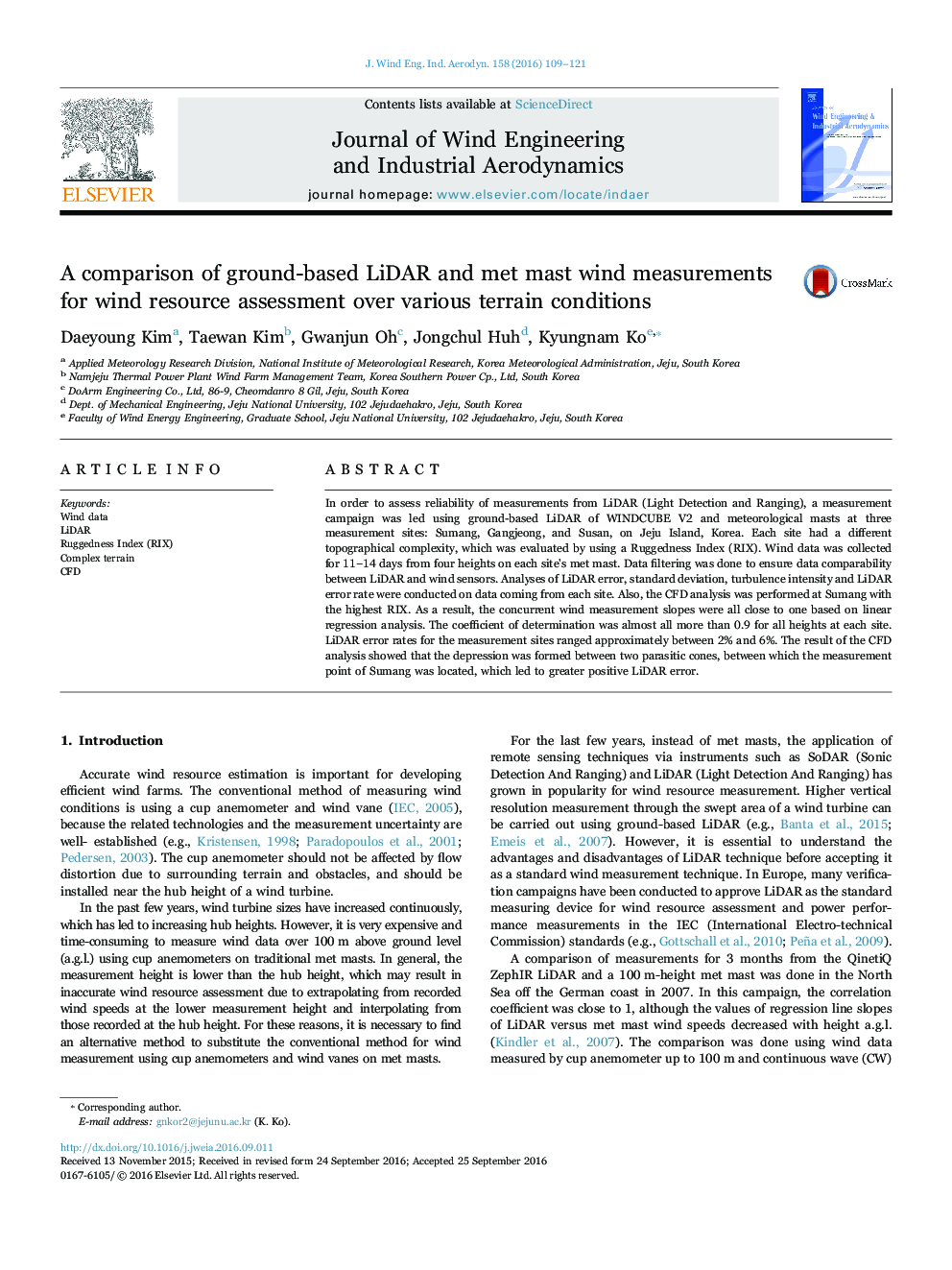| Article ID | Journal | Published Year | Pages | File Type |
|---|---|---|---|---|
| 4924984 | Journal of Wind Engineering and Industrial Aerodynamics | 2016 | 13 Pages |
Abstract
In order to assess reliability of measurements from LiDAR (Light Detection and Ranging), a measurement campaign was led using ground-based LiDAR of WINDCUBE V2 and meteorological masts at three measurement sites: Sumang, Gangjeong, and Susan, on Jeju Island, Korea. Each site had a different topographical complexity, which was evaluated by using a Ruggedness Index (RIX). Wind data was collected for 11â14 days from four heights on each site's met mast. Data filtering was done to ensure data comparability between LiDAR and wind sensors. Analyses of LiDAR error, standard deviation, turbulence intensity and LiDAR error rate were conducted on data coming from each site. Also, the CFD analysis was performed at Sumang with the highest RIX. As a result, the concurrent wind measurement slopes were all close to one based on linear regression analysis. The coefficient of determination was almost all more than 0.9 for all heights at each site. LiDAR error rates for the measurement sites ranged approximately between 2% and 6%. The result of the CFD analysis showed that the depression was formed between two parasitic cones, between which the measurement point of Sumang was located, which led to greater positive LiDAR error.
Keywords
Related Topics
Physical Sciences and Engineering
Energy
Renewable Energy, Sustainability and the Environment
Authors
Daeyoung Kim, Taewan Kim, Gwanjun Oh, Jongchul Huh, Kyungnam Ko,
